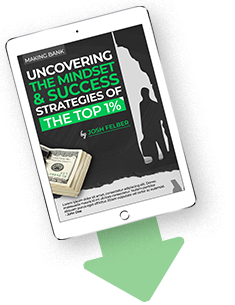The 3 Most Effective Types of Content to Build a Successful YouTube Channel
with Marlon Doll
Video:
Audio:
You have an amazing idea for a new YouTube channel. You’ve researched keywords, narrowed down your niche, and have some preliminary ideas for videos. But do you have a strategy? Does your content have a clear focus to increase audience engagement, viewership, and revenue? Having a framework that you can categorize your content under can help you create a longterm plan for your YouTube channel that keeps people coming back for more and consistently engaging with you and your brand.
YouTube itself has a basic framework you can follow to understand what type of content you are creating. In general, your content is going to fall under one of the following terms: push, pull, or power. Getting the right ratio of each type of content gives structure and longevity to your channel. Understanding these categories can also help you determine production and advertisement budgets for each video you create.
Let’s dive into how to define each category and how each type of content can be used to build a successful and focused YouTube channel that has an engaged audience and produces consistent and reliable income.
Push Content
Just as the name implies, push content is what you consistently push out to your existing audience. Push content is reliable, consistent, and geared towards an already engaged audience. This content is usually connected to itself and has overlap, such as a series or a show.
The idea with push content is creating consistency, but also anticipation and expectation. By having videos and content that continuously builds on itself you increase engagement from your audience. They keep coming back and watching the full videos because they are engaged and interested in what happens next. They keep returning because you set the expectation in each video that there is more content coming whenever the next video drops.
This might not be the focus when first starting a channel, but it is important to create and keep an eye on your longterm strategy. How do you plan to keep the audience you are working so hard to build engaged and coming back to your channel? This means creating predictable, consistent release rhythms as well as entertaining content that overlaps and builds on itself. Keeping pushing your audience with each video onto the next.
Pull Content
The next category to understand is pull content. This is going to be your longterm content. These will be how-to videos, educational, or informative videos. Think of pull content as your evergreen content. This is where you would really want to build your keyword search and clickability to help increase your search results rankings. This is what pulls new viewers to your channel in the first place.
Pull content may not be directly tied to other videos like content in the “push” category would be. The intention of pull content is to simply get a new potential audience to visit your YouTube channel, get engaged, and get interested in what else you might have available.
Strategy Note: Once you have a good grasp on the difference between push and pull content, you want to start building an intentional strategy around what type, and how much of each type of content you have available. A good ratio between push and pull is truly about half and half. You want enough pull content to have an excellent ranking and searchability, but you also want to make sure that once you pull a new audience member into your channel that you create opportunities to keep them engaged and returning to your channel as often as possible.
Power Content
The last type of content to understand is called power content. This is generally what we would be considered viral type videos. These are videos you would confidently invest more money into advertising.
There tend to be two camps when it comes to viral content. Some people believe viral content is spontaneous and cannot be intentionally created. This is the idea that it “happens when it happens.” The other belief is that viral content can be created successfully with the right tools and resources. We tend to believe that viral content can be created intentionally, but maybe not by everyone. If you are trying to intentionally create viral content you will have a much higher success rate if you already have a large brand online.
If you don’t already have a large successful brand to create highly viral content there are some things you can do to help increase your likelihood of success. If your view of viral content is something that is quick, rapid-fire adoption of a video this will inevitably be something that connects with people’s emotional feelings. When you connect to a person on an emotional level they want to share it. Emotional responses inspire action which will drive the potential for a viral-level video.
If you already have a library of content up on your YouTube channel, take some time to review and group all of your videos into one of these categories. This will allow you to get much more insight into what works best with your audience, what might be missing, and what changes you might need to make in order to have a more profitable channel.
If you are just starting out, create a habit from the beginning of sorting your content ideas and creating a clear strategy to create a balanced channel. Schedule time to review analytic data on your videos so you can make adjustments to your content ratios to meet your audience’s needs.
Having an intentional and planned mix of push, pull, and power content creates consistency, engagement, and loyalty with your intended audience. Put the time and effort into building out a framework and plan for your content so you can have useful data to review, organize, and use to make adjustments when needed. Once you have this framework you will be well on your way to a profitable YouTube channel.
Topics
- Accelerated Learning
- Artificial Intelligence
- Become Present
- Blockchain
- Branding
- Business
- Education
- Entrepreneurship
- Family
- Finance
- Health
- Health & Wellness
- Internet Marketing
- Investing
- Leadership
- Lifecoach
- Marketing
- Negotiation
- Performance
- Productivity
- Publicity
- Real Estate
- Sales
- Sales Success Habits
- Video Marketing
- Writing

















